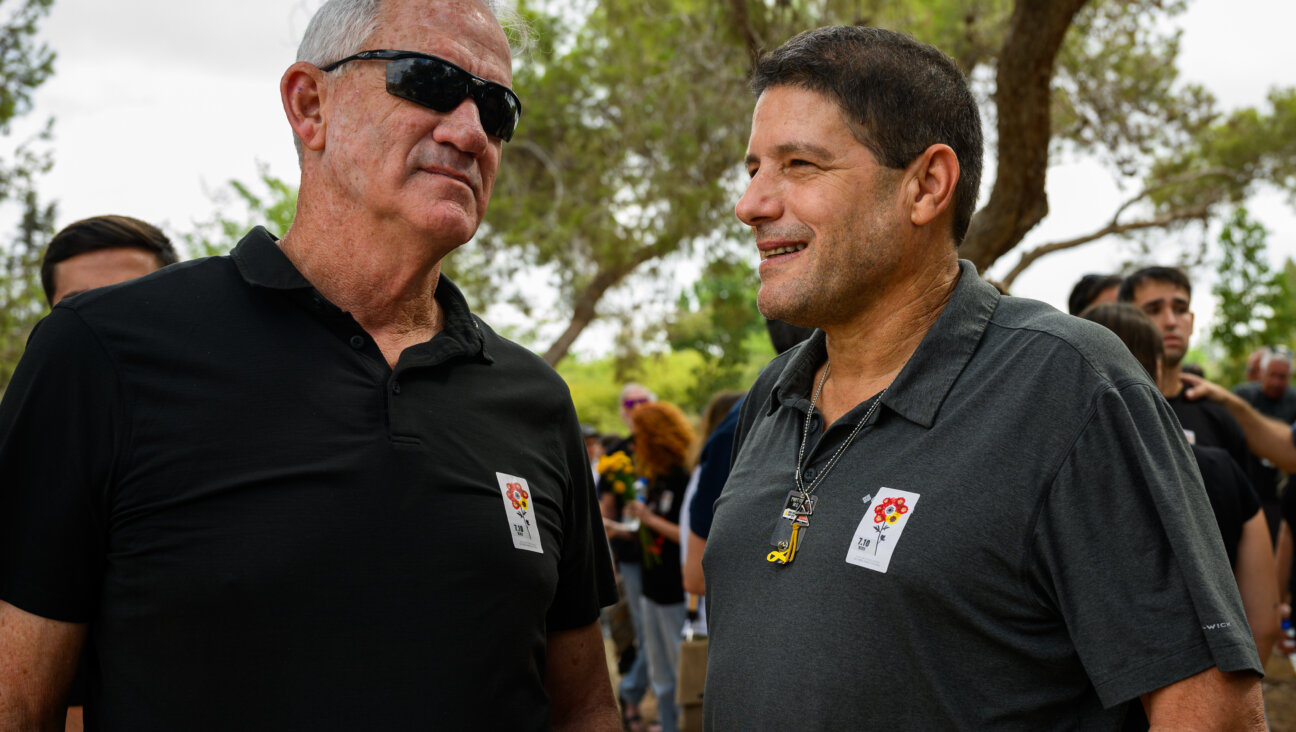July 9, 2010
Wyatt Earp’s Jewish Burial
It is truly ironic that in your June 18 issue, which features a cover story about the controversy over burying non-Jewish spouses in Jewish cemeteries (“Cemeteries Are Becoming New Challenge for Interfaith Families”), there is an unrelated article which mentions that “O.K. Corral gunfighter Wyatt Earp is buried in a Jewish cemetery, but only because of his Jewish wife” (“Chai Noon”). It makes you wonder what the authentic tradition really is.
Stu Lewis
Prairie Village, Kan.
Erdogan’s Calculations
In his June 25 column “Reading Between the Criticisms,” Leonard Fein accuses Israel of having “successfully destroyed its cordial relationship with Turkey” — as if Israel had a choice in the matter.
It was obvious from the time that Turkish Prime Minister Recep Tayyip Erdogan publicly lashed out at Israeli President Shimon Peres — an unheard of a diplomatic dressing down — that Erdogan no longer wanted a cordial relationship with Israel. The handwriting was on the wall. Erdogan wanted out.
What Erdogan wants is to be the leader of the Muslim world — without alienating the European Union. Thus he had to break off Turkey’s relationship with Israel without being perceived as the aggressor.
The Turkish strategy was brilliant: float a “humanitarian” flotilla to break Israel’s blockade of Gaza, draw Israel into a violent confrontation and declare that Israel had attacked Turkey.
Painting Israel as the aggressor allows Erdogan to burn the candle at both ends, to stay in the good graces of the E.U. and to close down his relationship with Israel — the black swan of the Mediterranean Sea.
Roberta Kalechofsky
Marblehead, Mass.
Gendered Yiddish Isn’t Dead Yet
Zelda Kahan Newman’s June 25 opinion article “The Mameloshn Is Still a Mother Tongue” raises several important issues.
Newman is absolutely right that Yiddish is still a living, spoken language whose death is not merely exaggerated, but outright false. She is also right that Yiddish will live mostly among the Hasidim, and so their Yiddish should be researched and taught. I particularly appreciate that she practices what she preaches — her research on Yiddish is concentrated on the Hasidic community.
However, I would disagree with her on a number of points.
Her statement that genderless Hasidic Yiddish is to gendered standard Yiddish as genderless modern English is to gendered Old English is inappropriate. Gender did not die out in Yiddish hundreds of years ago, but is still alive among a sizable proportion of Yiddish speakers and is in flux among Hasidim. From my experience with Hasidic Yiddish, it would be inaccurate to teach that there is no gender. In 100 years, it may make sense to teach that gender is strictly a historical phenomenon in Yiddish, but not in 2010.
Also, Newman’s statement that “when one teaches a living language, one looks to the living speakers as models of the standard language” is only partly true; a comparison with other European standard languages reveals that they are only partly based on current colloquial usage, so she overstates the case.
Moreover, the students who learn Yiddish at YIVO are interested in reading texts in standard Yiddish. While it is certainly worthwhile to acquaint them with today’s spoken language, it would not make sense to ignore the entirety of modern Yiddish literature in our language classes.
Finally, just like the grammar, the vocabulary among Hasidim is in flux. How would she suggest we teach their lexicon? More specifically, in view of their constant borrowing from English, how do we decide which words are Yiddish and which are not?
In spite of Newman’s success in finding Hasidic informants, the fact remains that most Hasidim are not interested in attracting the attention of Yiddish students and researchers. Perhaps she is correct, however, in suggesting that greater efforts on the part of Yiddish researchers to study Hasidic Yiddish could yield fruit.
Paul Glasser
Associate Dean
Max Weinreich Center
YIVO Institute for Jewish Research
New York, N.Y.























